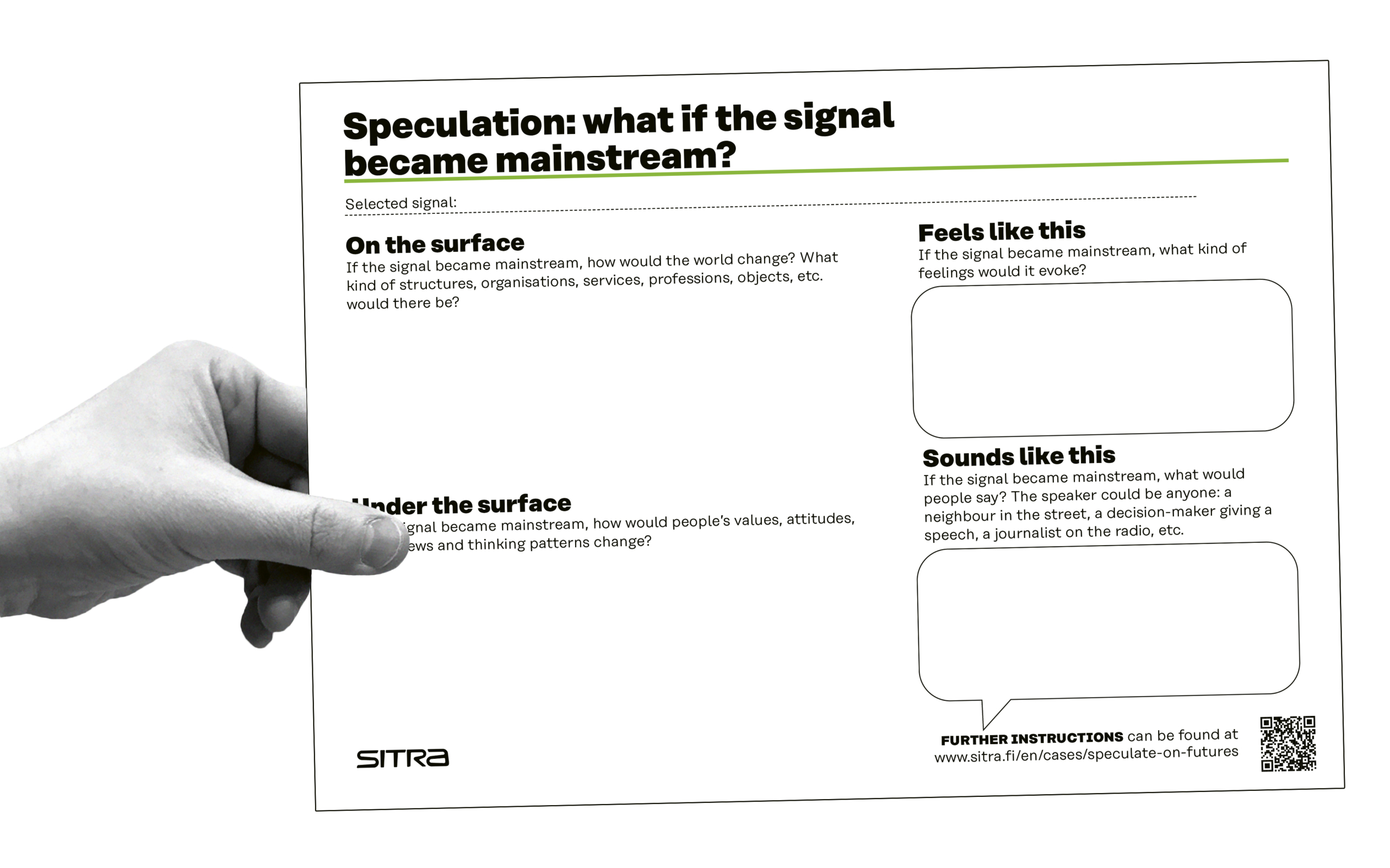A weak signal is the first symptom of a change or a sign of an emerging thing that may be significant in the future (Hiltunen 2010). It is something that has actually already happened, but that seems strange, surprising, ridiculous or outrageous to the observer and can be interpreted as a sign of a bigger and potential change.
Weak signals provide incentive for reflecting on different futures, encouraging speculation, i.e. boldly imagining different alternative developments. The Speculate on futures template helps you explore what kinds of possible futures the chosen signal or signals open up: how the visible world could change, how our thinking could change and how these changes could be reflected in people’s emotions and speech.
Preparation
Print the template or prepare a digital template. Select the signal or signals you will use when you work. If you need help in observing signals, you should familiarise yourself with the Probe tool.
Working
First, select the signal or a related set of signals that you want to analyse. After that, proceed in accordance with the questions in the template, discussing together and documenting the most important highlights of the discussion to the template.
After the work, summarise as appropriate, identify the necessary measures or responsible persons.
You can also have a reflective conversation by asking the following questions:
- What new things do you understand about your operating environment?
- How should you change the operation in the light of the signals?
- How do you prepare for the challenges indicated by the signals, and how do you seize new opportunities?
- What did you learn about the observation, interpretation and use of weak signals?
Tips
Tips for observing and interpreting weak signals can be found in the Weak signals guide.



Recommended
Have some more.
Weak signals from the future
Speculate on futures
Weak signals explorer